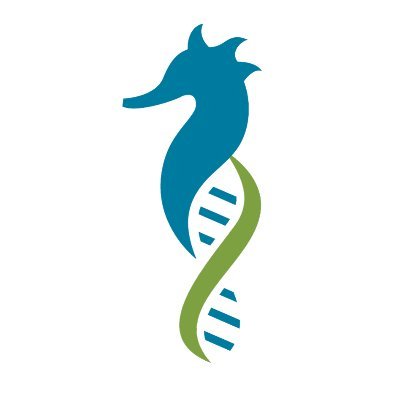
Jennifer Jahncke
@thejenjay
Followers
878
Following
12K
Media
658
Statuses
4K
Postdoc @VollumInstitute studying synapses. Likes cycling, hiking, wrangling data, and petting dogs. Follow me for updates on my plants. She/her.
Joined June 2009
‘No Way To Prevent This,’ Says Only Nation Where This Regularly Happens https://t.co/ccr3VmZzjD
236
3K
26K
In summary: - Dag1 glycosylation = formation + function - Dag1 ICD = function We think that extracellular interactions likely with a Nrxn family member is supporting synapse structure whereas indirect intracellular interactions are supporting synapse function.
0
0
2
What about intracellular interactions? I generated a PC specific Dystroglycan ICD truncation to get at this question. Interestingly, these mice had impaired synapse function but totally normal synapse formation.
1
0
1
First: Extracellular interactions. By conditionally deleting the glycosyltranferase Pomt2 I was able to abolish matriglycan expression - the extracellular business end of Dystroglycan. For all intents and purposes these mice had the EXACT same phenotype as Dystroglycan cKOs.
1
0
1
Now that we’ve established Dystroglycan’s role at these synapses: HOW is it accomplishing these roles? To do this I generated two mouse models: one in which extracellular interactions are disrupted and one where intracellular interactions are disrupted.
1
0
1
What was surprising was the increase in SIZE of GABAAa1 (but not VGAT) puncta. Reduced mIPSC amplitude + increased GABAAR puncta size? We think that Dystroglycan is regulating synaptic structure and we presume that there is a misalignment of synaptic microdomains in our mutants.
1
0
1
Perhaps to be expected, deleting Dystroglycan prior to synaptogenesis resulted in inhibitory synapse deficits. I found a reduced mIPSC frequency and amplitude by electrophysiology as well as reduced VGAT and GABAAa1 density by immuno.
1
0
1
This work really took off when I identified the Calb1-Cre line as a viable tool for deleting Purkinje cell genes as early as ~E14. This meant that for the first time we could study the role of Dystroglycan in synapse formation. (See my work characterizing Calb1-Cre in PCs below.)
Do you study cerebellar Purkinje cells? Do you use conditional genetics to manipulate said Purkinje cells? Friend, do I have a paper for you: Tools for Cre-Mediated Conditional Deletion of Floxed Alleles from Developing Cerebellar Purkinje Cells
1
0
1
The second half of my dissertation work is now up on bioRxiv! Here we examine the contribution of the functional domains of Dystroglycan to inhibitory MLI:PC synapses in cerebellar cortex 🧵
Distinct functional domains of Dystroglycan regulate inhibitory synapse formation and maintenance in cerebellar Purkinje cells https://t.co/h1T1gMNj9D
#biorxiv_neursci
2
3
21
A couple important lessons here. (1) Characterize your Cre line! It might not do what you think it does. (2) Reporter expression ≠ target gene deletion.
0
2
5
For kicks, I also characterized the timecourse of reporter expression and Dystroglycan deletion using virally expressed Cre (AAV8-CMV-Cre at P0) and found a similar timecourse to that of Pcp2-Cre.
1
0
1
F i n a l l y, I found Calb1-Cre. This was the answer for me. Calb1-Cre turns on embryonically and has stable expression in Purkinje cells throughout life. My Dystroglycan conditional knockouts showed no synaptic Dystroglycan signal in Purkinje cells at any time point.
1
0
1
We think that Ptf1a expression is *too* transient. So transient that it recombines the tdTomato reporter allele in every GABAergic cell, but Dystroglycan in only a subset of them.
1
0
0
So I tried Ptf1a-Cre. Ptf1a is transiently expressed in cerebellar GABAergic precursors (Purkinje cells + MLIs in cerebellar cortex). I was encouraged to see tdTomato reporter expression in all Purkinje cells early postnatally, however Dystroglycan deletion appeared stochastic.
1
0
0
Surely, Nestin-Cre would be early enough, despite not giving me cellular specificity. Nope! Turns out the Nestin line we have does not drive Cre recombination in Purkinje cells at all!!
1
0
0
Two things were happening: (1) Cre was turning on in Purkinje cells gradually from P7-P14 and (2) Dystroglycan was taking forever to turn over. I needed a Cre line that turned on earlier.
1
0
1
I began with a simple experiment: use the popular Pcp2-Cre mouse line to conditionally delete Dystroglycan from Purkinje cells. To my surprise, Dystroglycan wasn't deleted from every Purkinje cell when I looked at P16 despite tdTomato reporter expression in all cells.
1
0
0
This paper was born out of a personal struggle to identify a Cre line specific to Purkinje cells in the cerebellum, *prior* to synaptogenesis. This is the paper that I wish existed in my first year of grad school.
1
0
1
Do you study cerebellar Purkinje cells? Do you use conditional genetics to manipulate said Purkinje cells? Friend, do I have a paper for you: Tools for Cre-Mediated Conditional Deletion of Floxed Alleles from Developing Cerebellar Purkinje Cells
eneuro.org
The Cre-lox system is an indispensable tool in neuroscience research for targeting gene deletions to specific cellular populations. Here we assess the utility of several transgenic Cre lines, along...
1
4
21
It's hard to believe, but the first of the year's Advanced Research Training Courses is already over! Students in the Analytical and Quantitative Light Microscopy (@AQLMMBL) course arrived on campus on April 24 and head home today.
2
4
30










